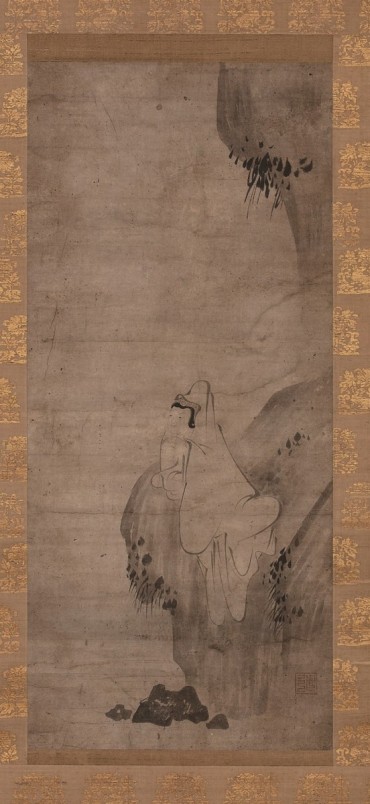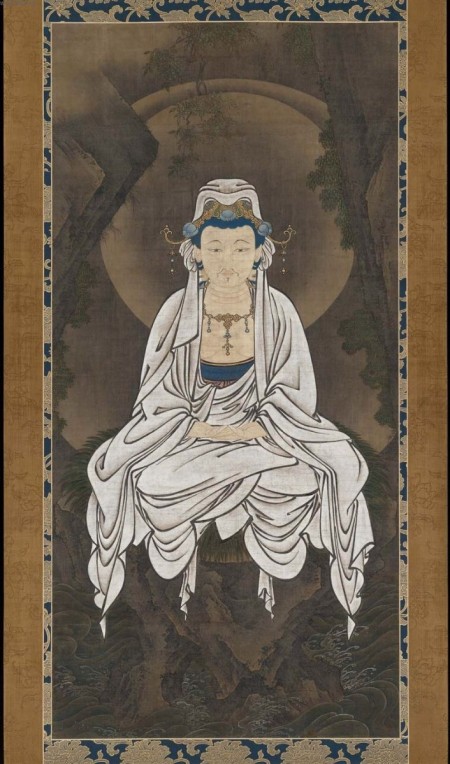Attributed to Shugen (fl. 1469–1521), Japan, Muromachi period; hanging scroll, ink on paper; 32 ¼ x 14 5/16 in.; The Frances Lehman Loeb Art Center, Vassar College, Purchase, gift of Mr. and Mrs. Leo Steinberg (Dorothy Seiberling, class of 1943); Elizabeth Woodcock, class of 1925; Bertha Mather McPherson, class of 1928 and Philip Johnson, by exchange, 2014.29.
White-robed Kannon, Bodhisattva of Compassion
Kano Motonobu (1476–1559), Japan, ca. first half of the 16th century; hanging scroll, ink, color and gold on silk; 61 7/8 x 30 1/16 in.; Museum of Fine Arts, Boston, Fenollosa-Weld Collection, 11.4267, photo: Wikimedia Commons.
This work, by the influential Japanese painter Kano Motonobu, projects a very solid, imposing sense of the bodhisattva. Kannon confronts the viewer head-on with an intense gaze. He sits in a symmetrical pose and wears crisply outlined robes. This contrasts with the nebulous, seemingly spontaneous presentation of the bodhisattva attributed to Shugen. Although contemporaries, these two Japanese artists demonstrate how Kannon inspired dramatically differing artistic interpretations in the 16th century.





